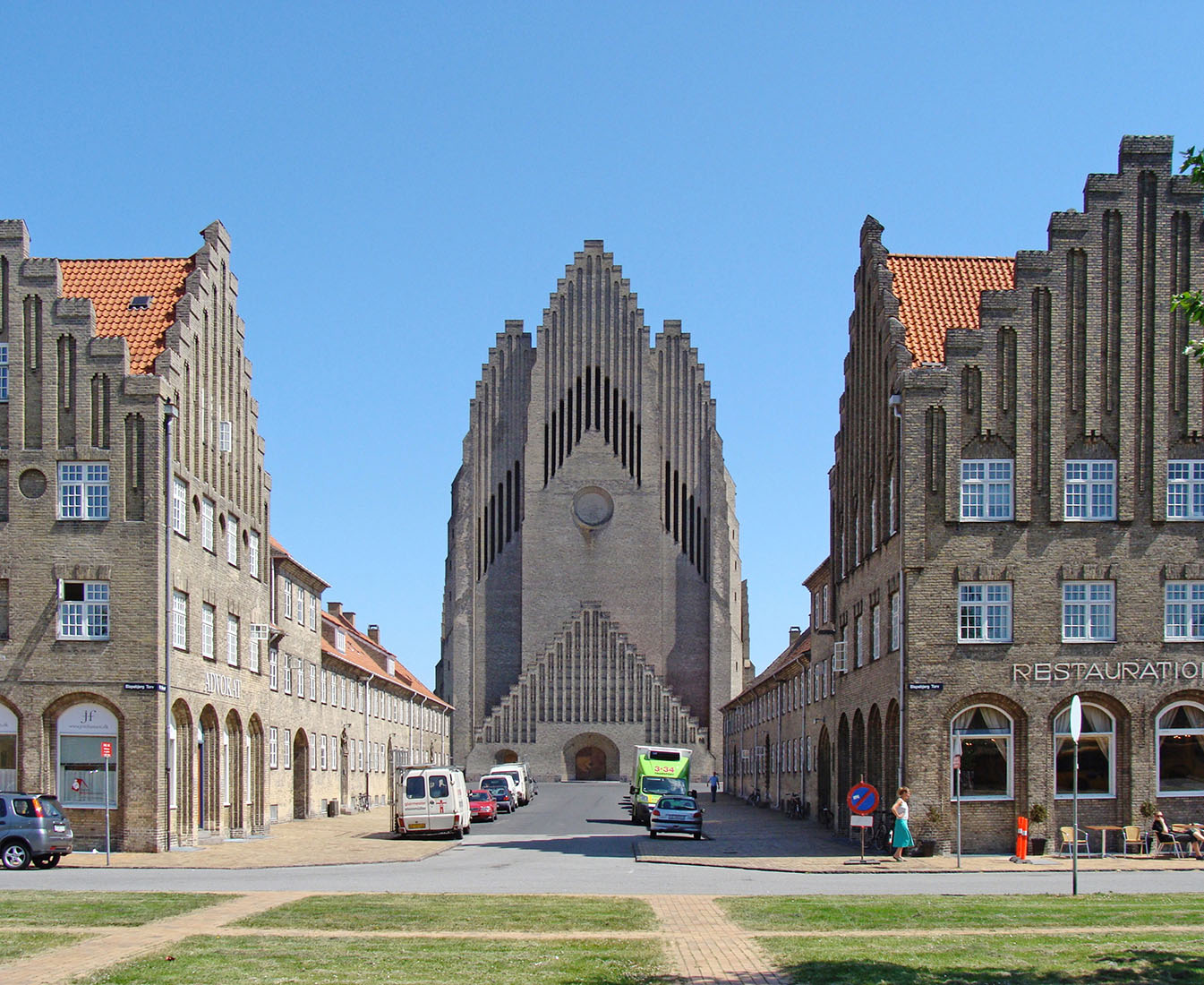 |
 |
 |
 |

Grundtvig's Church
På Bjerget 14B, Copenhagen
1913 - 1940
The Grundtvig's Church is located in the Bispebjerg district of Copenhagen, and is named named after the Danish philosopher and hymn writer N. F. S. Grundtvig.
This building is a rare example of expressionist church architecture.
As a consequence of its unusual appearance, it is one of the best known
churches in Copenhagen.The Grundtvigs's
Church is considered to be one of the most important Danish
architectural works of the time, having great influence onto the
following generations of Danish architects.
The commission for the design and construction of this church was
decided by a competition, which was won by Peder Vilhelm Jensen-Klint
in 1913. The construction of the building was only started after World
War I, when the foundation was layd on 8 September 1921. The
construction works were carried out mainly in the years from 1921 to
1926. At the end of this period was completed the impressive tower
section. The following year was celebrated the inauguration of the
so-called Tower Church. The construction continued until 1940 with
works on the interior and on the adjacent buildings. After the death of
Peder Vilhelm Jensen-Klint, the church was completed by Kaare Klint. The Grundtvig's
Church is positioned in the centre of a residential development, which
is also designed by Jensen-Klint. Church and residential building are
made of yellow bricks, creating an ensemble of great harmony. A
long tree-lined road runs through the Bispebjerg cemetery directly
towards
the church and the flanking buildings, resulting in a viewing axis
similar
to those conceived during Baroque period. The church is strongly
related to traditional Danish village churches with their stepped
gables. Traditional building techniques and materials were merged by
Jensen-Klint with then modern geometric forms of Brick Expressionism
and the classical verticality of Gothic architecture, resulting in a
synthesis of different architectural styles. The west facade of the
church is the most impressive feature of the building, including the 49
m tall bell tower. The interior of the church offers space for a
congregation of 1`800. The plan layout remembers a typical gothic
church with a nave, two lateral aisles and a small transept. The
interior space impresses with an extremely high ceiling, emphasizing
the verticality of the construction.
